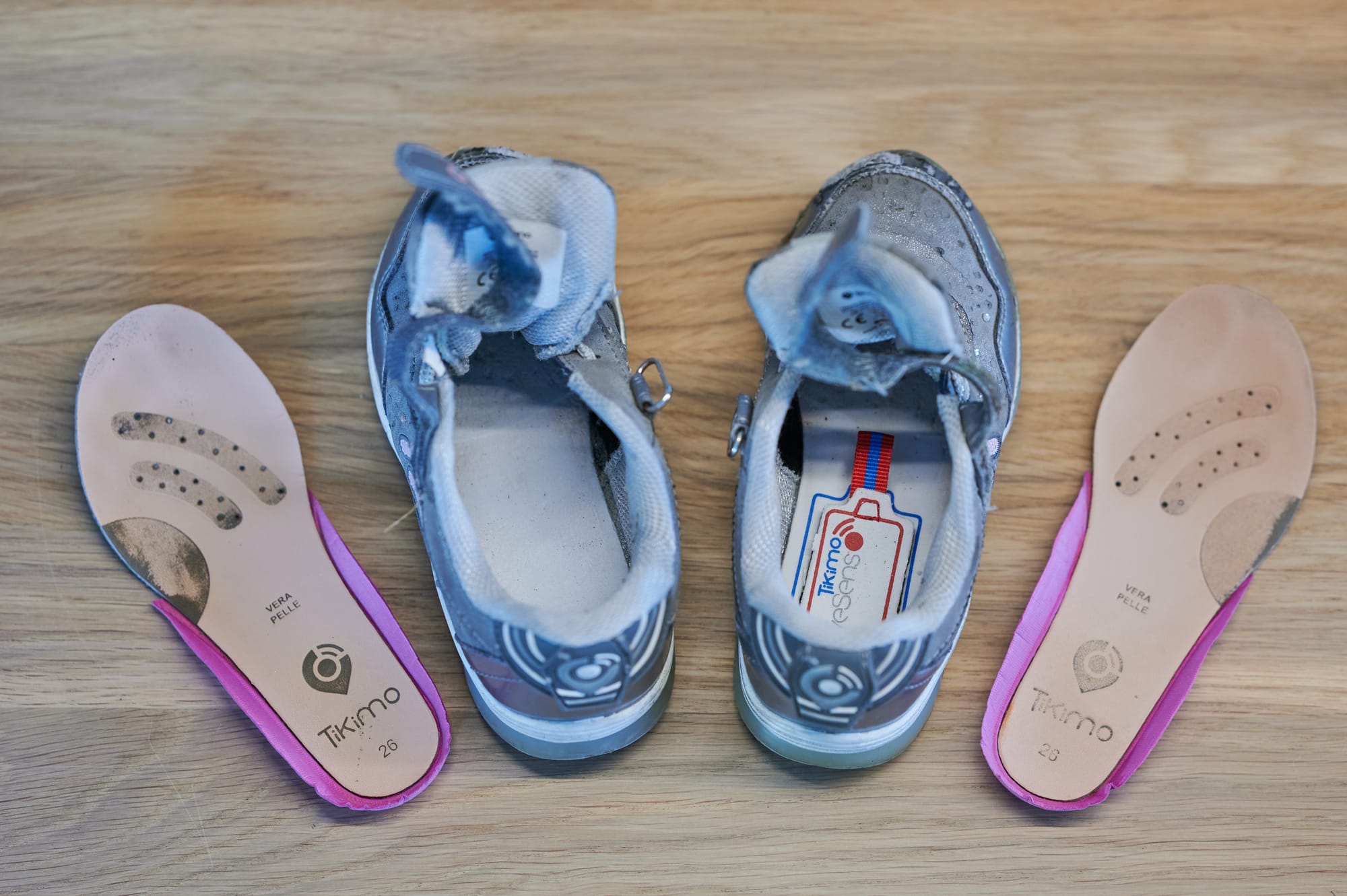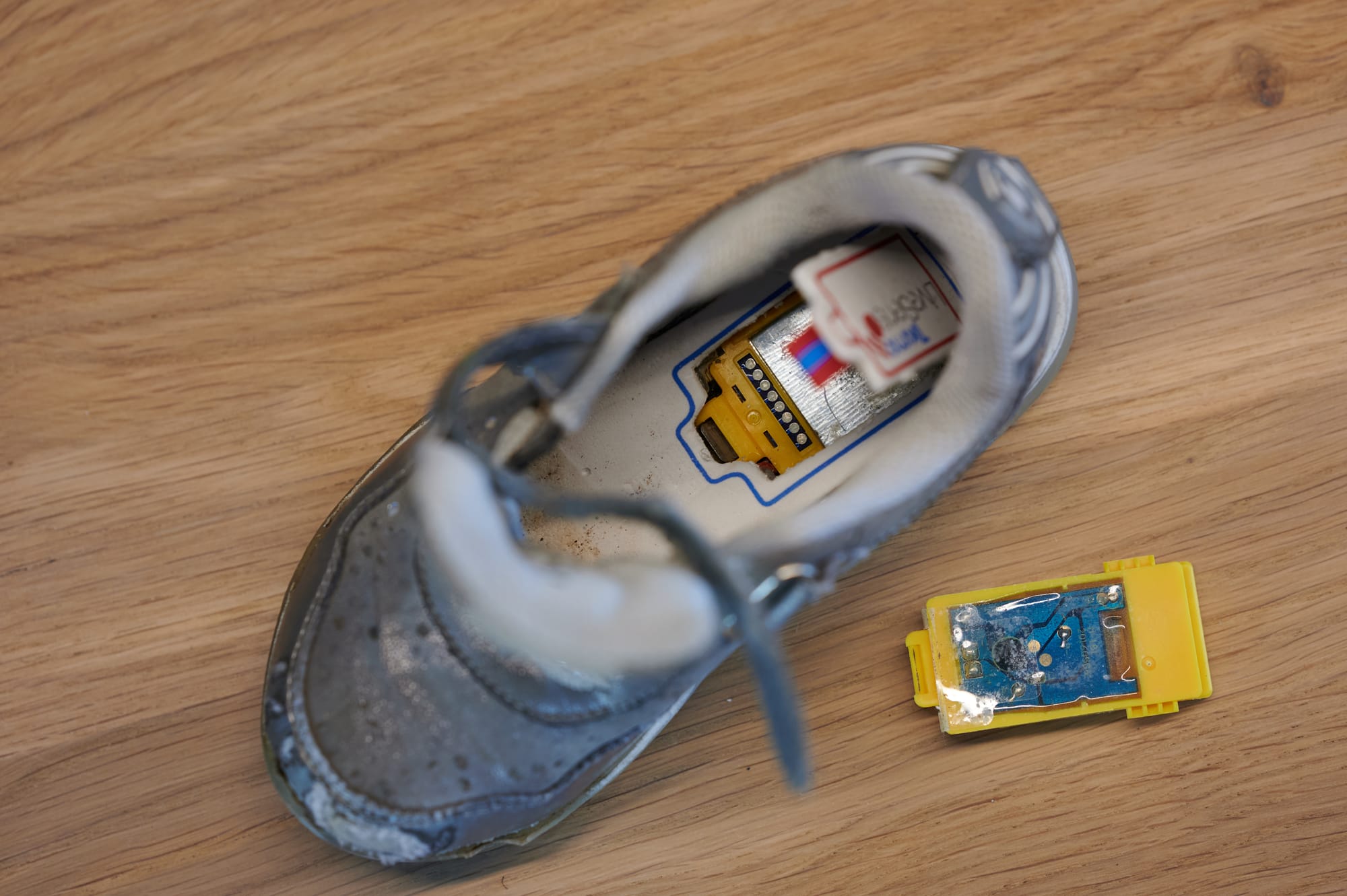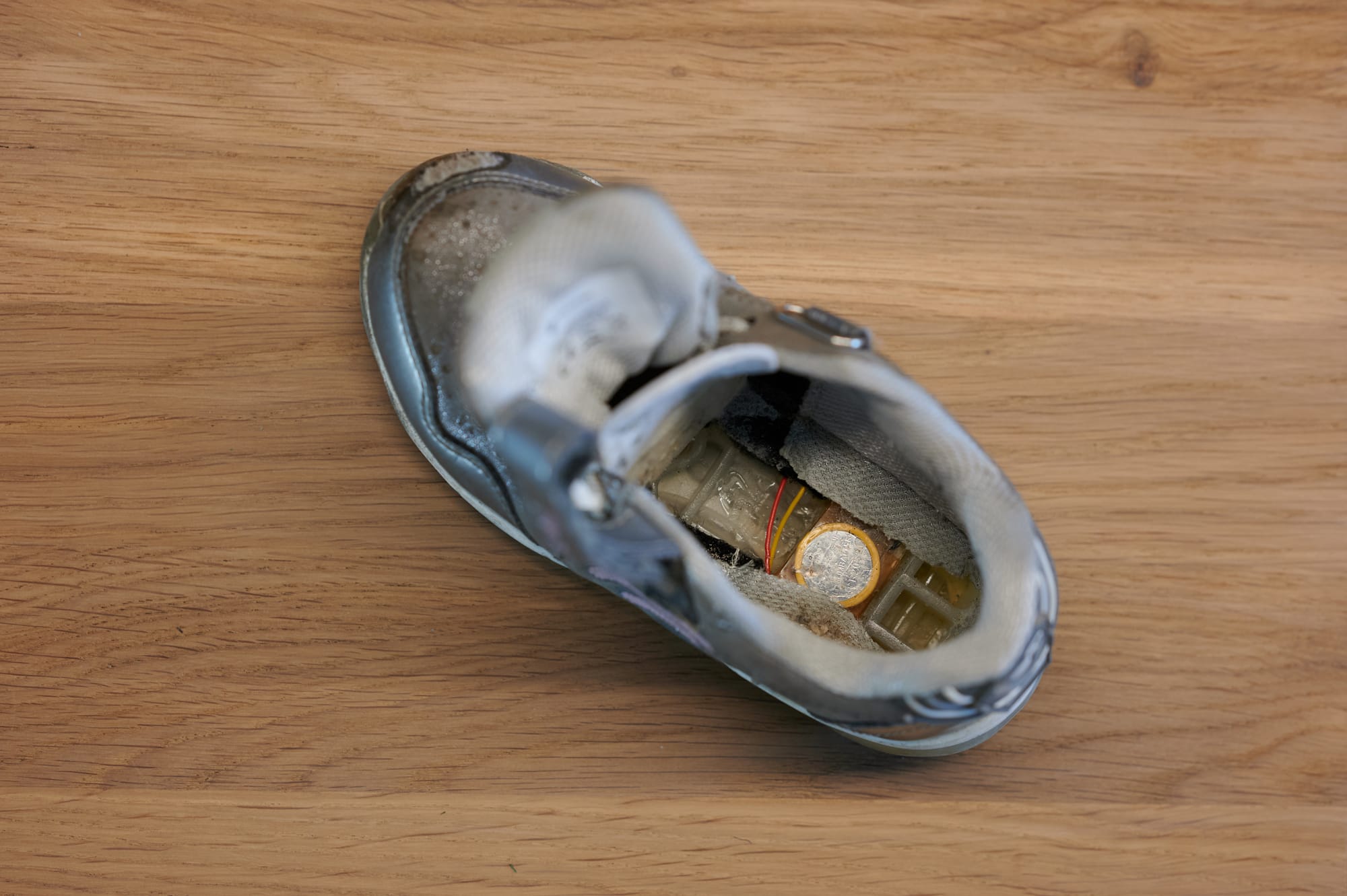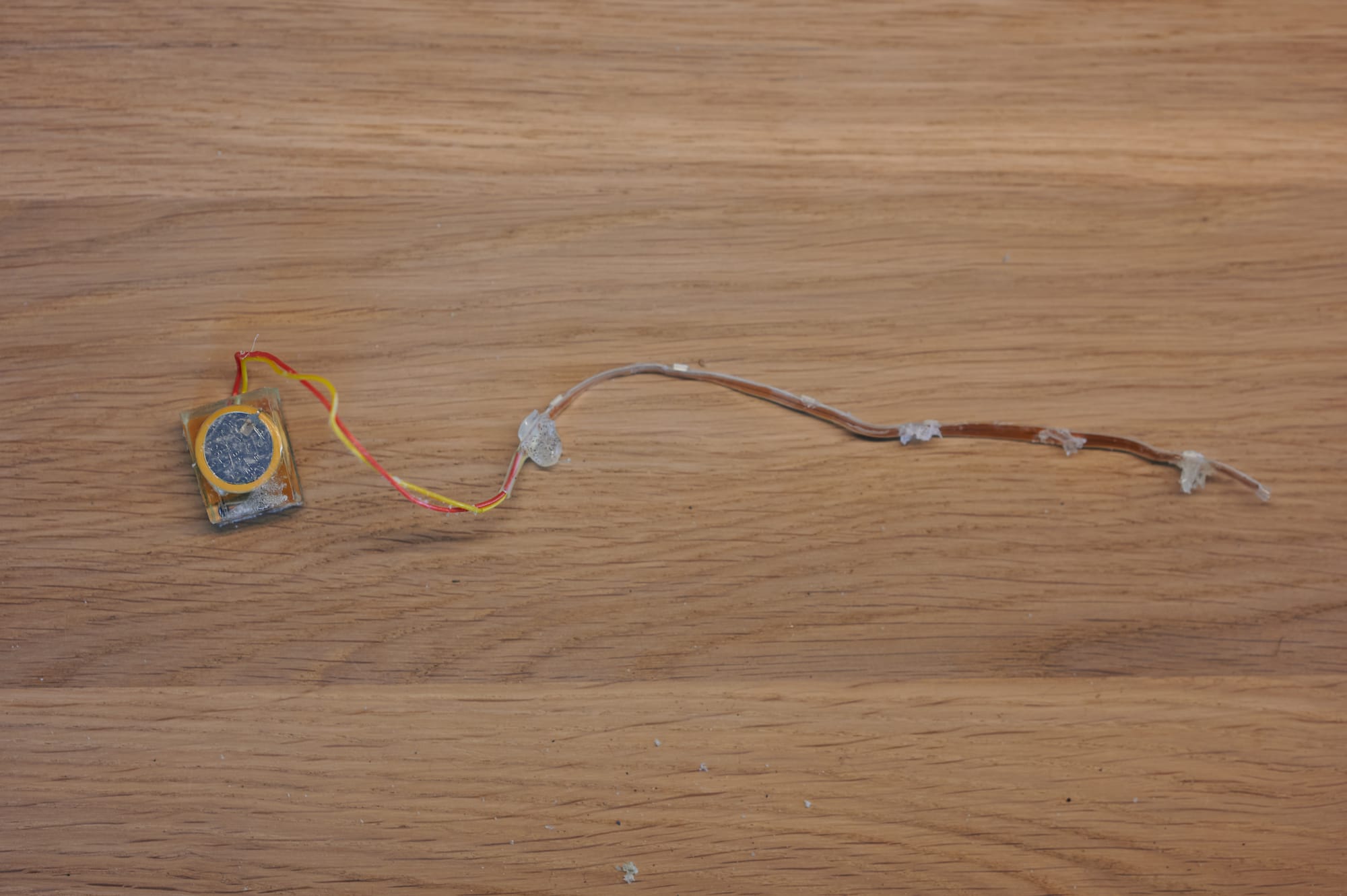Hidden Cost of Flashy Kids' Shoes
Will companies prioritize sustainability in design, or will short-term profits from products like blinking shoes continue to create long-term environmental costs?

We've all seen it—a child proudly striding down the street, their shoes lighting up with every step. For a brief moment, these blinking shoes are the envy of the playground, capturing attention with their flashy lights. But, inevitably, the spotlight shifts when the next kid shows up sporting an even more dazzling pair.
When my daughter finally outgrew her beloved pair of blinking shoes, I became curious about what went into making them—particularly, how much thought the designers had put into sustainability. So, I decided to do some reverse-engineering. The results were both surprising and telling.

A Tale of Two Shoes: Same Pair, Different Designs
To my surprise, both the left and right shoes in my daughter’s pair featured entirely different electronics designs and methods of integration. The left shoe had the electronic unit seamlessly embedded in the sole, requiring destructive methods to access it. In other words, I had to literally tear apart the shoe to get to the electronics.
The right shoe, on the other hand, had a small flap beneath the insole. This flap allowed easy access to an exchangeable unit containing both the electronics and battery. While this made the battery unit replaceable, both designs shared one unfortunate trait: the battery and electronics were encased in resin, making them impossible to recycle easily.
In both shoes, the LED light strip was glued inside the sole, requiring extensive cutting to remove it. These shoes weren’t designed to be taken apart or recycled—they were designed to be discarded.
Why Two Different Designs?
The presence of two distinct designs within the same pair of shoes raises an interesting question: Why?
It seems likely that at one point, someone in the design process had the forward-thinking idea of making the electronics and battery unit replaceable. This would have potentially extended the life of the product and allowed for easier recycling. However, this approach came with drawbacks—additional materials, more complex assembly, and extra manufacturing steps. For instance, the right shoe's design required two additional cast plastic frames, spring electrical contacts, and cuts in the sole to accommodate the flap.
Then, probably to reduce costs and streamline production, another decision was made. The replaceable components were eliminated, and everything was fully integrated into the sole, reducing the complexity—and the potential lifespan—of the product.
The True Cost of Convenience
The end result? A small increase in the company's profit margin at the expense of the planet. With the electronics fully integrated into the sole, there's no easy way to replace the battery, nor to recycle the components. What could have been a product designed with circularity in mind was instead optimized for short-term gain, leaving society to bear the long-term consequences.
At scale, this issue compounds. We're talking about thousands, if not millions, of shoes containing valuable materials like copper and rare metals—especially lithium—being thrown into landfills or incinerators. These metals could be recovered and reused, but because of design choices made during the design phase, they are lost forever.
The Bigger Picture: Corporate Responsibility and Design Choices
While kids may love the flashing lights and the brief thrill they bring, we adults—and especially designers—should know better. In an era when sustainability should be at the forefront of product development, how can companies continue to release products that are almost impossible to recycle?
The question we should be asking is: when will companies start to take full responsibility for the life cycle of their products? Decisions made in the design phase have far-reaching consequences, not just for profitability, but for the environment. A little more thought in the early stages could significantly reduce the environmental impact later on.
In the case of these blinking shoes, a product that brings joy for a few months ultimately contributes to a growing waste problem that future generations will have to deal with. As consumers, we need to push for more sustainable product designs. And for companies, it's time they step up and design with the full life cycle—and the planet—in mind.




